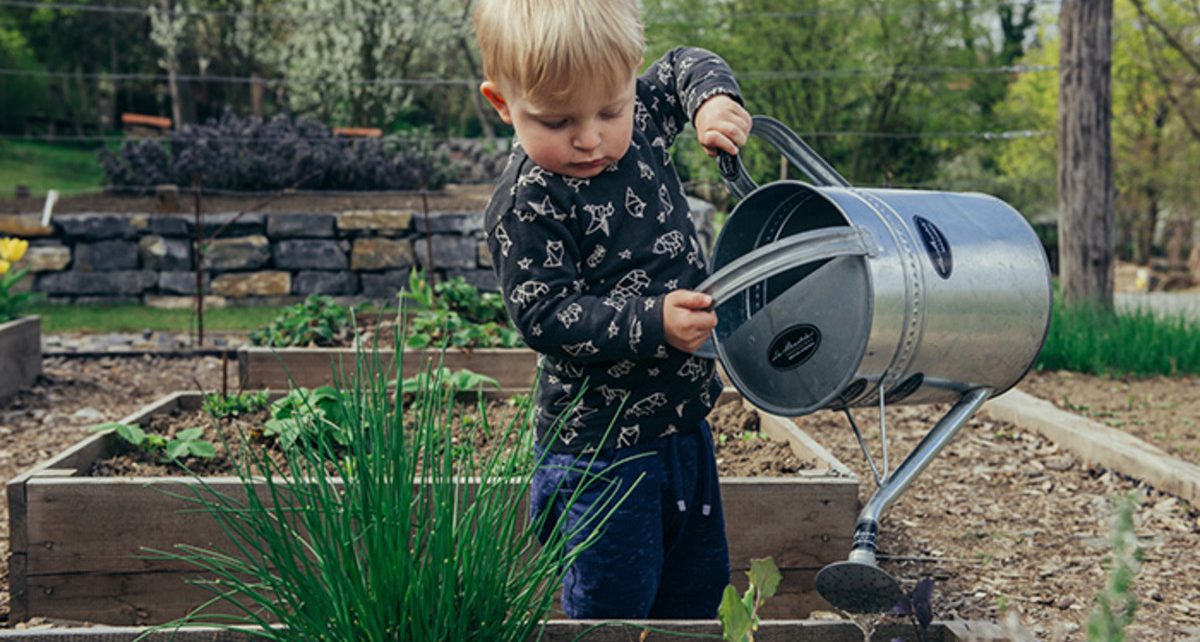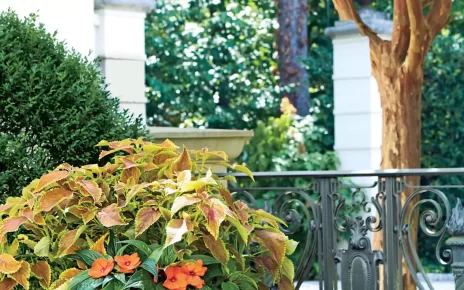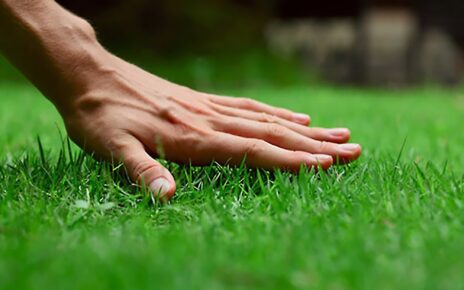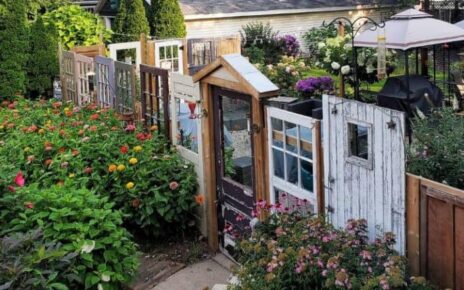Children at this age are eager to explore nature’s surprises. They can go on insect, color, clover/shamrock and flower hunts.
Provide them with easy-to-handle seeds and gardening tools and choose flowers and vegetables that grow quickly, like sweet peas or courgettes. They may also want to enter their produce and bouquets in the local fair.
Plant a Sensory Garden
Kids are naturally curious, and gardening activities can help them establish connections with the natural world. Adding sensory elements to your garden encourages learning through touch, sight, smell, taste and sound.
Choose plantings that offer a variety of colors, textures and heights. For visual stimulation, consider a mix of blooms in a range of sizes and shapes, as well as leafy ground covers like creeping thyme (Thymus serpyllum) and moss. Consider adding a splash of color with flowers that attract pollinating insects, such as foxgloves and lavender, and fruit-bearing plants like strawberries, raspberries and blackcurrants.
For scent, include blooms that emit a delicate fragrance like nasturtium and peony, and aromatic herbs such as rosemary and thyme. Ensure the garden has textures to touch, including rough-textured tree stumps for seating, a sandy area for pathways and prickly or smooth stepping stones. Incorporate regular or irregular patterns into the garden, using objects like brick work and paving, fencing and dandelion clocks.
Create a Garden Hideaway
When kids can spend time in the garden without worrying about parents, they’re likely to want to explore and make their own discoveries. Setting up a den or tree house in the garden is one way to encourage this. Using branches and leaves or even a tent peg for a door is fun for the kids, but it’s also a way to promote healthy outdoor play (and keep the garden tidy).
Another great idea is creating a room in your garden by making a teepee structure. This can be as easy as sticking a few bamboo sticks in the ground, leaving space for children to go inside, and planting climbing veggies like snap peas or beans at the base of each pole. As the peas or beans grow, they’ll create an enchanted garden that the kids can play in.
Kids can also help save bees by building a bug hotel in the garden. This will attract pollinators, who are vital for the health of your garden and the ecosystem.
Build a Bird Feeder
Kids of all ages can enjoy creative garden activities. Younger children may require close supervision and assistance with watering and planting seeds, while older children can handle a greater variety of tasks independently.
Whether in a garden plot, a container or on the windowsill, kids can grow vegetables that are easy to care for. Vegetables like beans, peas, carrots and cucumbers are good choices for beginners.
Encourage your kids to observe and record how plants need water. Explain the reasons why they must be watered regularly to thrive. You can even have them water indoor plants on a regular basis and watch the results of their efforts.
Create a bird feeder using a recycled plastic bottle. Just cut the top portion off a plastic bottle, poke holes and fill with seeds. This super simple project also makes a great gift for garden-loving children. See the tutorial at Little Peanuts Mag for more details.
Make a Seed Viewer
A garden is an amazing learning tool for young children. Watching plants grow is an exciting activity for them and they’ll appreciate eating their own homegrown vegetables even more if they’ve helped nurture the seeds to maturity.
An easy and fun indoor gardening activity for kids is to create a seed viewer out of plastic cups and construction paper. Kids can line the cup with construction paper and then fill it with balled up pieces of paper towel and some bean seeds. Place the seed viewer on a windowsill and they can watch the seeds sprout and grow!
Taking a closer look at how plants grow can be a great way to teach kids about plant anatomy. You can even incorporate a little science into your garden activities with this fun project from Around the Kampfire that demonstrates how leaves breathe. Using a simple planter or an egg carton makes this lesson even more hands-on for kids.





